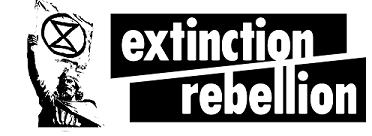WINCHESTER COLLEGE WANTS TO GO ARTIFICIAL
Planning Reference: 22/02812/FUL
5,027sqm/1.24 acres.
Why is artificial grass harmful to the environment?
We need to reduce the carbon we release into the atmosphere if we are to have any chance of avoiding the Climate Catastrophe.
We must suck out the excess carbon in the atmosphere. Trees, grass and shrubs do that perfectly well. We need to protect our trees and green spaces in order to preserve life for future generations.
• Artificial grass does not provide any food for living creatures. It restricts access to the soil beneath for burrowing insects and to the ground above for soil dwellers such as worms.
• It restricts access to natural materials like leaf litter and grass clippings – essential for feeding soil organisms like worms and microscopic animals and keeping the soil healthy.
• Artificial grass reaches significantly greater temperatures than those reached by natural grass under the same weather conditions. Plastic lawns can overheat in hot weather making them unusable.
• Artificial grass can contribute to global warming by absorbing significantly more radiation than living grass and, to a lesser extent, by displacing living plants that could remove carbon dioxide through photosynthesis.
Soil is a natural carbon store
• especially if plants are growing in it, slowly taking carbon from the atmosphere and putting it back into the plants and the ground. Removing a large area of planting that is actively locking carbon into the ground releases that locked carbon back into the atmosphere.
• Artificial grass creates a large carbon footprint during a journey that includes the manufacturing, transportation and installation of the product.
• Replacing soil with sand to create a stable bed for artificial grass releases more carbon dioxide stored in the earth.
• Artificial grass is more likely to cause surface run off after significant rainfall which may contribute to flooding.
Artificial grass is made from polyethylene
• polypropylene or nylon (polyamide), and fragments from this material can make their way into the soil, into the air and into the waterways the River Itchen, in the form of microplastic pollution. We use water from the River Itchen as our drinking water.
• The shelf life for artificial grass is estimated to be 10-20 years and the product is difficult to reuse. Although it can be recycled, this is not easy and can only be done at specialist plants after a specific cleaning process.
• Artificial grass is not totally maintenance free. It still needs to be cleaned of litter and moss growth, potentially replacing mowing with vacuuming.
The benefits of a natural lawn
• Grass, like all living plants, takes up carbon dioxide and releases oxygen.
• A natural lawn acts as an air filter, trapping and absorbing smoke, dust, and pollutants that would otherwise be breathed in by us.
• A natural lawn creates an ecological barrier between your house and the street.
• Lawns are a home for beetles, other insects and worms, and they attract birds such as starlings that feed on the invertebrates hidden below.
• Lawns can also provide seed for birds. Those of annual meadow grass, plantain, buttercup and dandelion are particular favourites.
• Lawns improve water quality and prevents soil erosion.
• Grass absorbs sound and reduces noise pollution.
• Access to a natural lawn can reduce stress and improve wellbeing
